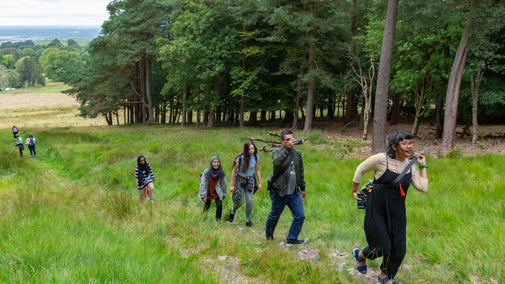Headley Heath Lizard Trail
Surrey
The Lizard Trail is a wonderful way to explore the rich array of flowers, birds, insects and animals that inhabit Headley Heath's rare environment of acid lowland heath and dry chalk downland.
Near to
Headley HeathStart point
Headley Heath main car park, grid ref: TQ193546Trail information
Difficulty*
Full trail
DistanceMiles: 2 (km: 3.2)Short trail
DistanceMiles: 1.9 (km: 3.04)More near here
Headley Heath bluebell walk
Explore the hidden corners of Headley Heath to discover the bluebell dell and high spots. Enjoy this wonderfully varied walk across heathland, through woods, and along ridges and valleys.

Headley Heath to White Hill walking trail
Explore the Surrey Hills on this 4-mile walk over heathland and through woodland, open pasture and across farmland.

Headley Heath Second World War walking trail
Take this fascinating walk over Headley Heath to learn more about its military past and how it has shaped the landscape today.

Headley Heath circuit
Enjoy stunning views on this moderate walk over some uneven terrain of open heathland, woodland and chalk downland.

Get in touch
Our partners

We’ve partnered with Cotswold Outdoor to help everyone make the most of their time outdoors in the places we care for.
You might also be interested in
Walking
Explore some of the finest landscapes in our care on coastal paths, accessible trails, woodland walks and everything in between. Find the best places to walk near you.

Cotswold Outdoor: our exclusive walking partner
Learn about the National Trust’s ongoing partnership with Cotswold Outdoor. Find out how they help us care for precious places and the exclusive discount available for National Trust supporters.

Follow the Countryside Code
Help to look after National Trust places by observing a few simple guidelines during your visit and following the Countryside Code.

Things to see and do at Headley Heath
With an incredible network of paths, Headley Heath has so much to offer you on a day out, and it's not far from London either.

